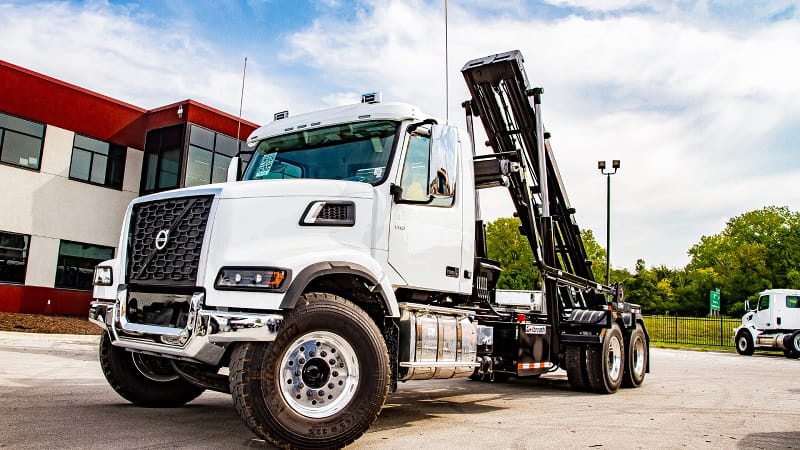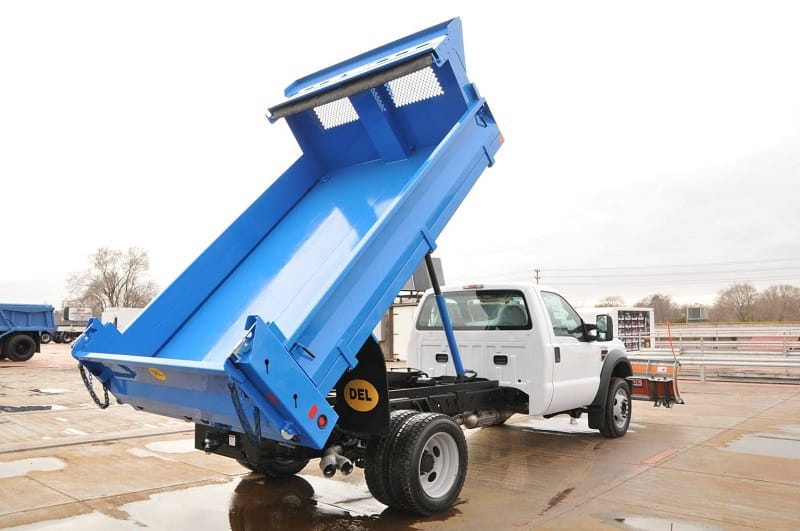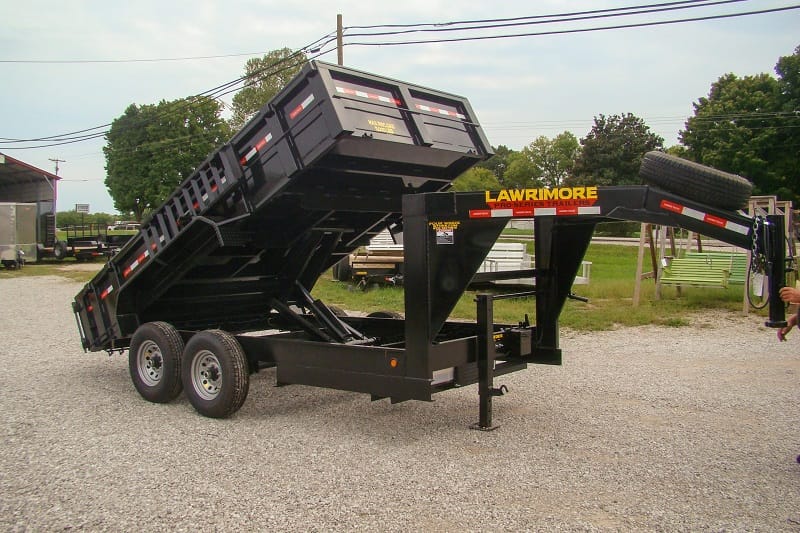How Does a Dump Truck Hydraulic System Work? catdumptruck.com | A dump truck’s hydraulic system is essential for lifting and tilting the truck bed to unload materials efficiently. This system uses hydraulic pressure to generate the force needed for raising and lowering the dump bed.
Understanding how a dump truck’s hydraulic system works can help operators and maintenance personnel optimize performance and prevent breakdowns.
This article explores the working principles of a dump truck hydraulic system, its key components, the step-by-step process of operation, common issues, and best maintenance practices.
Read More: Dump Truck Hydraulic Oil Capacity: Importance, Factors, and Maintenance
How Does a Dump Truck Hydraulic System Work?

Key Components
The hydraulic system in a dump truck consists of several critical components working together to perform lifting operations:
1. Hydraulic Pump
Converts mechanical energy from the truck’s engine into hydraulic energy.
Common types include gear pumps, vane pumps, and piston pumps.
Powered via a PTO (Power Take-Off) unit connected to the truck’s transmission.
2. Hydraulic Fluid
Transmits power throughout the hydraulic system.
Provides lubrication, cooling, and corrosion protection.
Requires proper maintenance to prevent contamination.
3. Hydraulic Cylinder
Converts hydraulic energy into mechanical force to lift the dump bed.
Typically a telescopic cylinder, allowing for greater extension and lifting power.
4. Hydraulic Tank (Reservoir)
Stores hydraulic fluid and prevents contamination.
Includes filters and breathers to keep the fluid clean.
5. Control Valve
Directs the flow of hydraulic fluid to either raise or lower the dump bed.
Can be manually or electronically controlled.
6. Hoses and Fittings
Transport hydraulic fluid between system components.
Must withstand high pressures and temperature variations.
How the Dump Truck Hydraulic System Works
The operation of a dump truck’s hydraulic system follows a sequential process:
1. Engaging the PTO (Power Take-Off) System
The operator activates the PTO, which transfers power from the engine to the hydraulic pump.
The pump begins drawing hydraulic fluid from the reservoir.
2. Pressurizing the Hydraulic Fluid
The hydraulic pump increases fluid pressure and directs it toward the control valve.
The control valve determines whether the fluid flows to extend or retract the hydraulic cylinder.
3. Extending the Hydraulic Cylinder
Pressurized hydraulic fluid enters the cylinder, causing it to extend.
The extension of the cylinder pushes the dump bed upwards, allowing materials to be unloaded.
4. Lowering the Dump Bed
Once unloading is complete, the operator reverses the control valve.
Hydraulic fluid is redirected, retracting the cylinder and lowering the dump bed smoothly.
How Does a Dump Truck Hydraulic System Work?
Common Issues and Troubleshooting
Despite being a reliable system, hydraulic issues can arise, affecting performance. Below are common problems and their solutions:
1. Slow or Weak Lifting Action
Causes: Low hydraulic fluid levels, air in the system, or a worn-out pump.
Solutions: Check and refill fluid, bleed air from the system, or replace the hydraulic pump.
2. Hydraulic Fluid Leaks
Causes: Damaged hoses, worn seals, or loose fittings.
Solutions: Inspect and replace faulty components, tighten fittings.
3. Overheating Hydraulic Fluid
Causes: Excessive load, continuous operation without cooling, or contaminated fluid.
Solutions: Allow cool-down periods, use the correct fluid type, and maintain proper filtration.
4. Unstable or Jerky Movement
Causes: Contaminated fluid, clogged filters, or a malfunctioning control valve.
Solutions: Replace hydraulic fluid, clean or replace filters, and inspect valves.
Best Practices for Maintaining a Dump Truck Hydraulic System
Proper maintenance ensures the hydraulic system operates efficiently and lasts longer. Follow these best practices:
- 1. Regular Hydraulic Fluid Checks
Monitor fluid levels and top up as needed.
Use the manufacturer-recommended hydraulic oil type.
- 2. Routine Filter Replacement
Clean or replace filters to prevent contamination.
Ensure breathers are functioning properly.
- 3. Inspect Hoses and Fittings
Look for wear, leaks, or cracks.
Replace damaged components immediately.
- 4. Monitor Cylinder Condition
Inspect for leaks or abnormal movements in the hydraulic cylinder.
Repair or replace worn seals and components.
- 5. Flush the System When Necessary
If contamination is detected, flush the hydraulic system before adding new fluid.
- 6. Operate the System Correctly
Avoid overloading the dump truck beyond its hydraulic capacity.
Engage and disengage the PTO system properly.
Conclusion
The hydraulic system is an essential part of a dump truck, providing the necessary lifting power for efficient material handling.
Understanding its components, functionality, and maintenance is crucial for ensuring optimal performance and longevity.
By following proper maintenance practices, monitoring hydraulic fluid conditions, and troubleshooting issues proactively, dump truck operators can enhance reliability, reduce downtime, and extend the lifespan of their hydraulic systems. A well-maintained hydraulic system ensures safety, efficiency, and productivity in dump truck operations.
- 2004 Mack Dump Truck - April 21, 2025
- 2007 Mack Dump Truck: A Reliable Workhorse - April 20, 2025
- 2025 Mack Dump Truck: Innovation Meets Power - April 19, 2025





